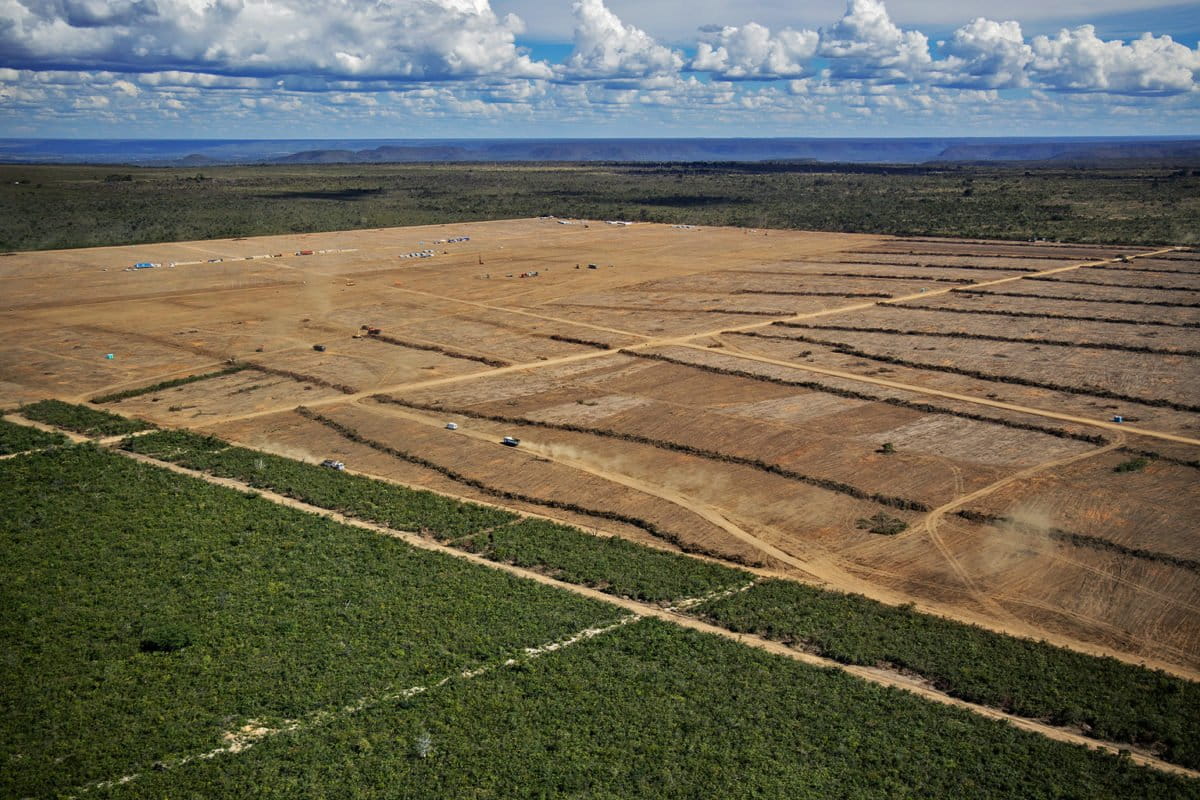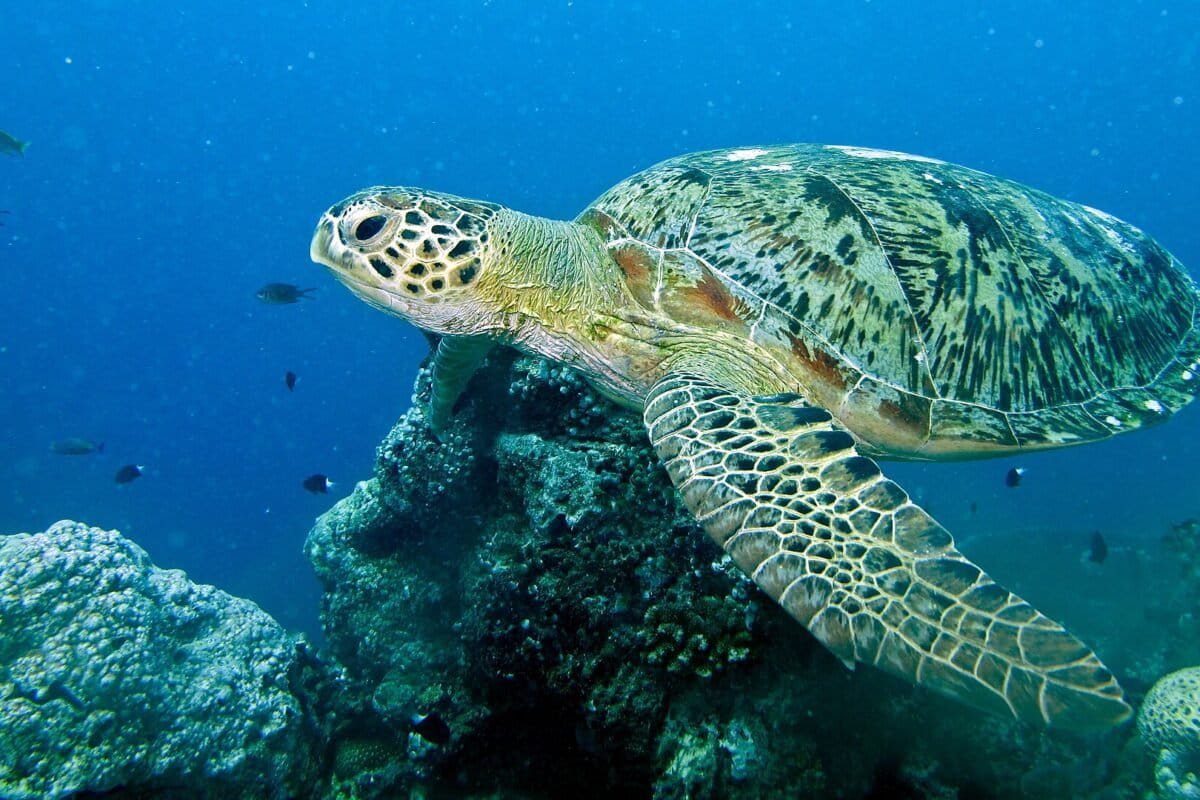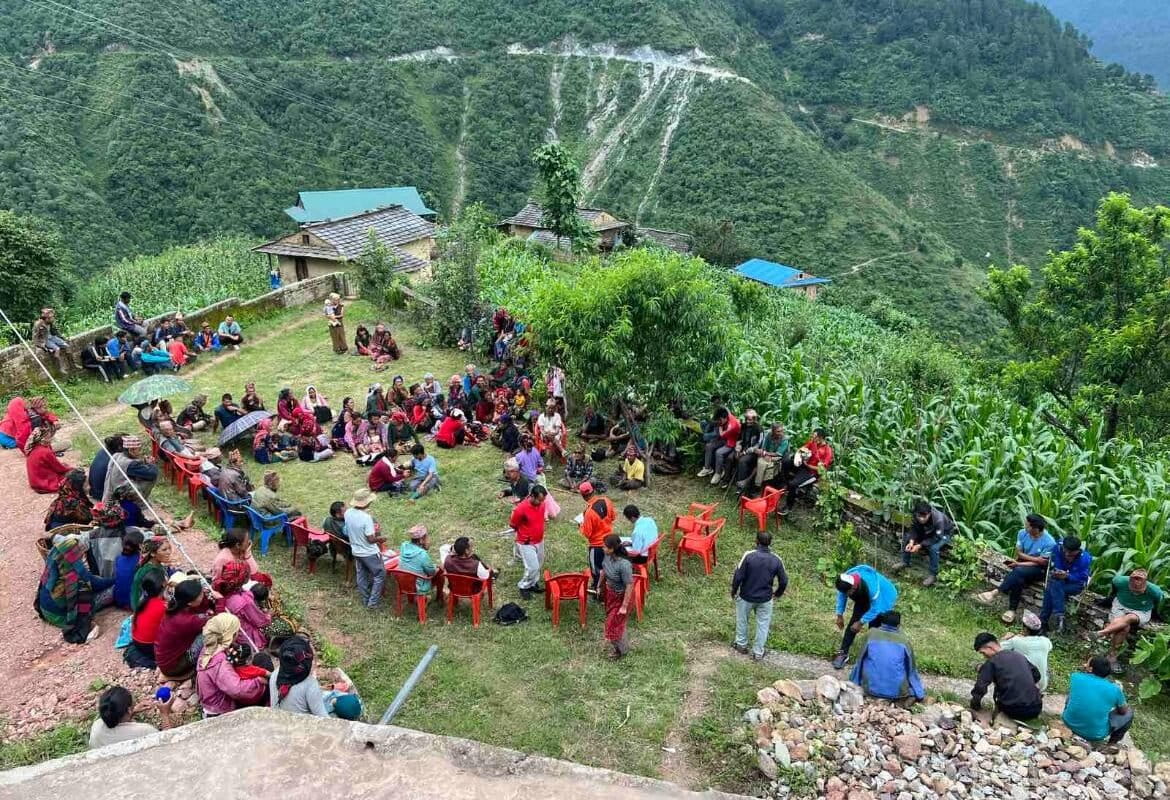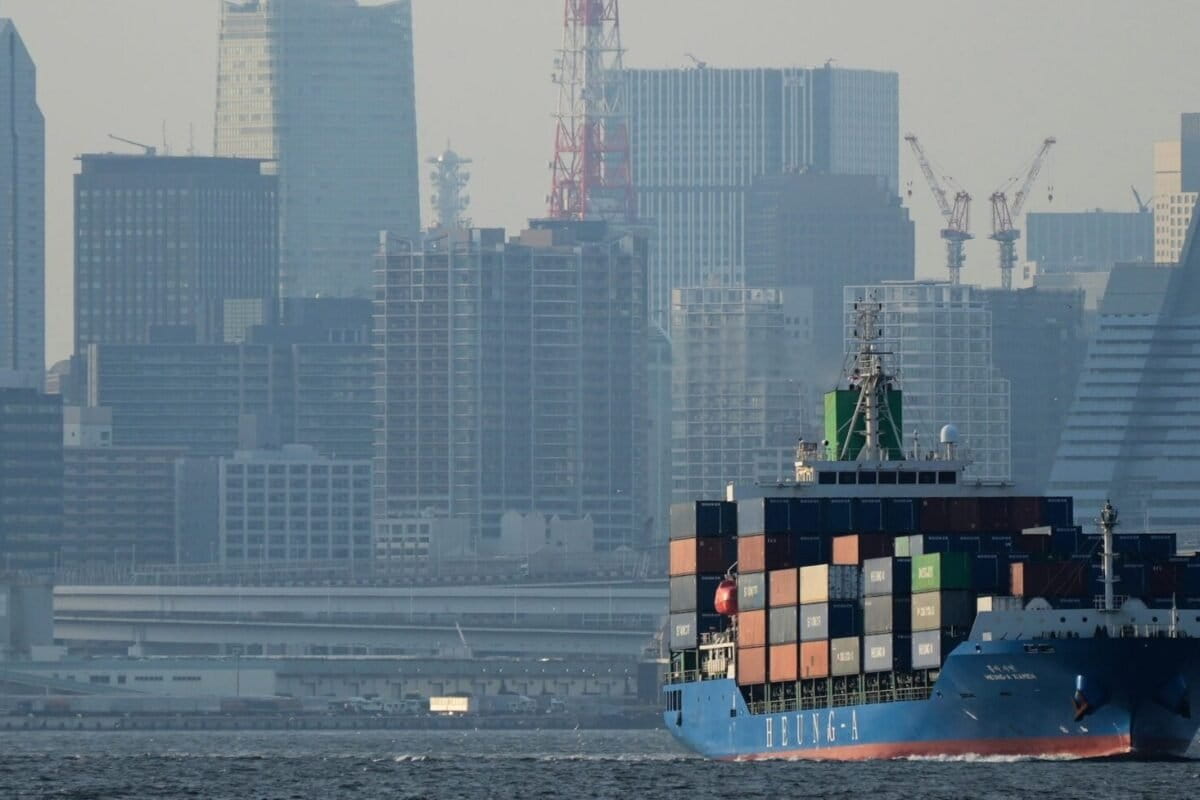- Some agricultural producers in the Brazilian Cerrado who indirectly supply soy to the European market still haven’t complied with the forthcoming European Union’s antideforestation regulation, or EUDR, an investigation has found.
- Two companies, Mizote Group and Franciosi Agro, have cleared 986 hectares (2,436 acres) since May 2024, advocacy group Earthsight found, including forested areas — meaning any of the soy grown isn’t EUDR-compliant.
- The Cerrado, a biodiverse savanna, is the Brazilian biome most vulnerable to deforestation driven by agricultural expansion, losing more than 652,000 ha (1.6 million acres) of native vegetation in 2024.
- The EUDR and voluntary certification schemes like the Roundtable on Responsible Soy (RTRS) aim to root out deforestation from supply chains — but the latter has limitations, while implementation of the former risks being delayed by another year.
Agricultural producers in Brazil’s Cerrado savanna continue to clear land for soy, which puts them in breach of the European Union’s upcoming antideforestation law, or EUDR, a new investigation shows.
In September 2024, investigative nonprofit Earthsight published its “Secret Ingredient” report, which established links between chicken sold by McDonald’s and at supermarkets in Europe, and soy produced on deforested land in the Cerrado. In a recent update to the report, Earthsight found that two of the three producers identified in “Secret Ingredient” continued to clear land for soy in the year since.
This makes their product noncompliant with the EUDR, which, at the time of Earthsight’s research, was due to come into force on Dec. 30 this year. The European Commission has since proposed delaying the application of the law for another year.
“The threat that soy production and agricultural expansion pose to the Cerrado … is still ongoing,” said Lara Shirra White, Latin America researcher at Earthsight and lead author of “Secret Ingredient: A year of inaction,” the update to the 2024 investigation.
“And so the chance of soy and other commodities that are linked to the conversion and deforestation of the Cerrado entering international supply chains … is still a very real threat,” she told Mongabay.
Spanning about 200 million hectares (500 million acres) across central Brazil, or more than double the size of California, the Cerrado is the world’s most biodiverse tropical savanna. It’s a vital carbon sink and a home to traditional Indigenous and Afro-descendent quilombola populations, and is nicknamed “the cradle of waters” as it plays a key role in replenishing South America’s main watersheds.

But the Cerrado is also one of Brazil’s most depleted biomes, with just over half still covered in native vegetation. In 2024, 652,197 hectares (1.61 million acres) were cleared in the Cerrado, making it the most deforested biome in Brazil — worse even than the Amazon — for the second year running, according to mapping initiative MapBiomas.
Agricultural activity, which expanded in the Cerrado by 74% between 1985 and 2024, is the main driver of deforestation. The area known as Matopiba — a new agricultural frontier straddling the states of Maranhão, Tocantins, Piauí and Bahia, in which the farms analyzed by Earthsight are located — accounted for 75% of Cerrado deforestation last year. Deforestation and land conversion for agricultural expansion not only affect the ecosystem and release carbon dioxide into the atmosphere, but also impact traditional communities, who often face violence and illegal land invasions.
Earthsight’s initial report found that two Brazilian producers, Mizote Group and Franciosi Agro, cleared 23,164 hectares (57,239 acres) on their properties in the west of Bahia state between January 2021 and April 2024. Earthsight was unable to identify deforestation permits for 60% of this area, suggesting it was cleared illegally. It also reported that a third producer, Horita Group, had properties tied to allegations of violence against local communities and land grabbing.
The three companies sell soy to commodity traders Cargill and Bunge, who in turn are responsible for around 95% of the soy exported to the EU from western Bahia, Earthsight found.
Since May 2024, Mizote Group and Franciosi Agro have cleared an additional 986 hectares (2,436 acres), of which 381 ha (941 acres) occurred after the 2024 publication of “Secret Ingredient.” Most of this deforestation was on properties owned by Franciosi Agro, Shirra White told Mongabay in a video interview.

The EUDR bans the sale of products cultivated on land deforested after 2020, and requires compliance with producer-country laws on issues such as land use, labor rights and Indigenous rights. The law targets only deforestation of forested areas, based on a Food and Agriculture Organization definition, which excludes certain savannas and grasslands. This technicality leaves about 74% of the Cerrado outside the EUDR’s scope. The recent deforestation shown by Earthsight, however, included the type of forests protected by the EUDR.
The two companies obtained deforestation permits for this clearance, Earthsight found by cross-checking satellite data from sources like MapBiomas and Global Forest Watch with environmental authorizations granted by Inema, the Bahia state environmental agency. But any soy grown on this land would not be EUDR-compliant.
Voluntary certification vs. legislation
Even without the EUDR, existing voluntary sustainability standards aim to reduce deforestation in the supply chains of products like soy. But Earthsight’s research highlights the shortcomings of such certifications, notably the Roundtable on Responsible Soy (RTRS). Both Franciosi Agro and the Horita Group were RTRS-certified at the time of Earthsight’s initial investigation.
RTRS standards allow a producer to select which of their properties they want to certify, which means they can still deforest on any of their other properties; according to Earthsight, this was the case with Franciosi Agro.
In theory, this shouldn’t prevent traders like Cargill and Bunge from only purchasing certified soy, Shirra White said. Earthsight did not have access to the platform used for trading, but “it is our understanding that the RTRS chain of custody model should ensure that a trader, when buying from a certified producer, is buying from certified properties, not other properties in the vicinity,” she said.
But this loophole does leave the door open to greenwashing, she said, with producers able to present themselves as RTRS-certified while deforesting or otherwise failing to meet RTRS standards on some of their properties.
Last year, the RTRS suspended Franciosi Agro and Horita Group’s certificates based on the findings in the “Secret Ingredient” report, and launched an investigation into the producers, as well as into the accreditation agencies that had assessed them for certification. The investigation was subsequently outsourced due to a lack of internal resources. In an email dated Oct. 8, the RTRS told Mongabay that “The findings of these investigations are being thoroughly analyzed and we are actively discussing results to determine the appropriate course of action and responses.”
The RTRS did not reply to a question on whether there have been other cases leading to the suspension of certified producers due to suspected noncompliance. “There’s a lack of transparency there,” Shirra White said, adding that this kind of information should be made public.

“[Certification schemes] have limitations, but that doesn’t take away their worth and importance, primarily that of bringing an incentive to the producer,” said Paula Bernasconi, South America engagement lead at Trase, an organization providing open data on deforestation and commodity supply chains.
The EUDR builds on that, she said, as it compels countries to develop their own systems to respond to the regulation’s requirements. “We placed great hope in the EUDR due to its aspect on [the respect of local] laws,” said Guilherme Eidt, policy and advocacy coordinator at the Institute for Society, People and Nature (ISPN), a Brazilian NGO that advocated for a broader application of the European legislation to areas that don’t meet the forest definition.
“In Brazil we have a low export volume of both soy and beef to Europe. So this legislation can be very interesting to stimulate the development of systems which could apply to [exports to] China, our biggest buyer of soy and beef, and even to the domestic market,” Bernasconi said.
Trase’s data are used by retailers at the end of the supply chain and, increasingly, by financial institutions as part of their due diligence processes, she said. She attributed this to the EUDR and other regulations demanding better transparency and traceability. Traders like Bunge and Cargill have their own, usually opaque, systems to track deforestation among their suppliers, while Trase does not work closely with rural producers.
Mongabay was unable to contact the producers investigated by Earthsight to enquire about their efforts to become EUDR-compliant. In a written response to Earthsight, Mizote Group said it “maintains business relationships that adhere to ethical, environmental, and legal compliance standards. All negotiations are conducted based on internal and external audits, aligned with the traceability, sustainability, and accountability requirements that guide the industry.”
Concern with EUDR delay
Campaigners like Shirra White say they worry that another delay to the EUDR will weaken the momentum it created in galvanizing industry players to increase traceability.
The European Commission cited IT issues to justify the potential delay, but for Shirra White, this “rewards the laggards who have been lobbying against the law and have not put any effort into complying.”
Coming amid other setbacks such as the dismantling of the Soy Moratorium, a voluntary agreement that helped reduce soy-related deforestation in the Amazon, the EUDR delay “signals a kind of backtrack in concerns about forests,” Shirra White said.
“It’s a sign of current priorities,” said the ISPN’s Eidt, noting that the urgency around the climate agenda has faded as geopolitics take center stage.
That leaves the law vulnerable to attempts to strip it back and risks encouraging further deforestation in the Cerrado, with the tainted produce then entering the EU-bound supply chains.
“[The EUDR] really must come into force as quickly as possible,” Bernasconi said.
Banner image: A deforested area in Barrerias, in Bahia state, a region known as “The Ring of Soy” for its high concentration of soy farms, processing plants and distribution centers. Image © Marizilda Cruppe/Greenpeace.
FEEDBACK: Use this form to send a message to the author of this post. If you want to post a public comment, you can do that at the bottom of the page.



